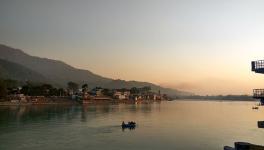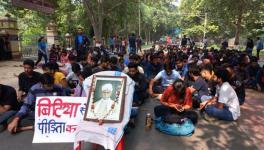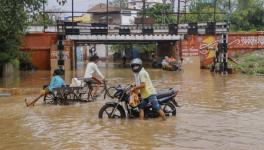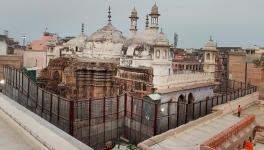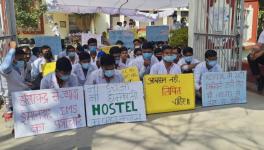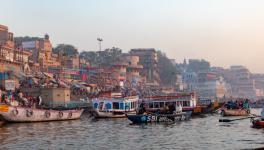UP Floods: Looms Shut, Machines Damaged, Weavers in Varanasi Lose the Thread
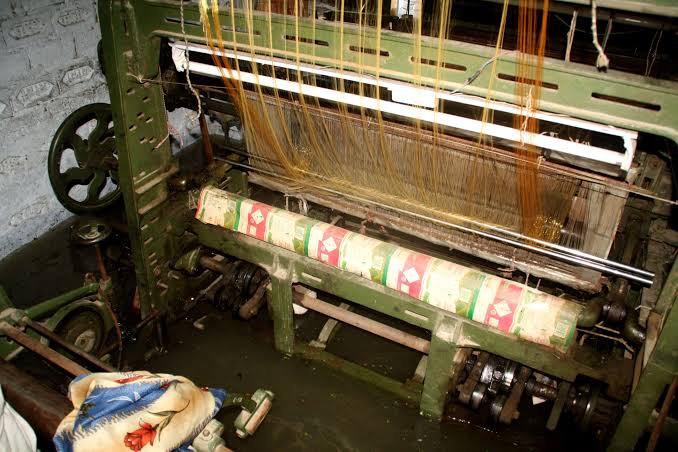
After the shadow fallen over the shining threads of the famous weavers of Varanasi with the imposition of Goods & Services Tax (GST) on textiles, the sector has taken another hit. Several machines in powerlooms, handlooms and houses of weavers—loacted in the low-lying areas of the Prime Minister Narendra Modi's constituency—have been submerged in floodwater due to the dangerous rise in the water level of river Ganga.
The houses have been flooded for the last one week rendering the handlooms and powerlooms shut. The machines have submerged in the water and more than a hundred weavers have been affected due to the flood.
The weavers said that even if the water lever will decreases from “today”, it will still take at least a month to start the machines because usually, the machines for the looms are installed in a pit—so that people can sit on them. “If there is water in the pit, it will take several weeks to drain and dry. Our livelihood is going to be badly affected due to this,” said a weaver while speaking to NewsClick over the phone.
Areas like Nakkhighat, Ramna, Dafi, Maruti Nagar, Ansarabad, Talimnagar and Saraiyya which are in the downstream of Varuna and are close to the confluence of Varuna and Ganga, start flooding when the level of Ganga crosses 67 metre. Chief Minister Adityanath had visited Varanasi on September 21 for inspection but he did not bother to go towards the weavers’ settlements, alleged the weavers.
Abdullah, a weaver from Ansarabad, told NewsClick, “This is not the first time that we are facing such devastating flood that is affecting our livelihood. More than hundred families are dependent on weaving in the area and all the powerlooms are installed on the ground floors in a pit. All the machines get submerged as soon as floodwater enters houses. We don't know how long this will persist. Cleaning these machines will take up months. We'll suffer huge loss.”
When asked how much it will take to repair the machines, Riyaz Ansari, another weaver, said, “The weavers will have to spend at least Rs 15,000 to 20,000 on the repair once the floodwater recedes. The area now has less than 1,00 handlooms which are mostly operated by women, as the men have migrated to Gulf countries in search of jobs. In the name of compensation, we get only food packets sometimes. We have never received any compensation to repair the machines.”
Meanwhile, social worker Rajani Kant of Varanasi, who made it to the list of Padma awardees this year for his work in the handloom sector, handicrafts in weaving industry, told NewsClick, “Not only weavers but farmers also have been affected due to the floods. Thousands of acres of land was submerged in the flood. These weavers live on the bank of the Varuna river. Twenty years back, this area used to be open, but since the population is increasing rapidly, people belonging to the Muslim and Dalit communities constructed houses in the low-lying areas on the riverbed. Whenever Ganga flows above the danger mark, the low-lying areas are flooded. The government provides them with compensation after every flood to repair their machines.”
However, Girdhari Lal Nishad, who also works as a weaver, accused the government of not visiting their areas. He said, “Though I do not have any powerloom, but in my neighbourhood, there are so many. It is false that the government provides any compensation. Yes, the District Magistrate gives lollipops in the name of compensation sometimes. I have a two-floor house and for the past one week, I have been living on the top floor because the floodwater had entered the lower floors. Not a single rupee of compensation I have received from anyone. The chief minister had visited Varanasi for 'aerial view' and photo-op, but did not visit the area where people are in dire need of help.”
Afsar Khan, owner of many powerlooms and a member of union of the weavers told NewsClick, “Not only the livelihood of weavers is affected due to the floods, but they also have to spend huge amount to make the machines operational—incurring massive amounts of debt. It’ll take a whole year for them to recover from that and then again comes the flood. This is how their life runs. Now the younger generation is migrating to Gulf countries for their livelihood, as powerlooms sector seems to be in its fag end.”
Also read: UP Floods: Water Enters Low-lying Areas of Several Districts
Get the latest reports & analysis with people's perspective on Protests, movements & deep analytical videos, discussions of the current affairs in your Telegram app. Subscribe to NewsClick's Telegram channel & get Real-Time updates on stories, as they get published on our website.









